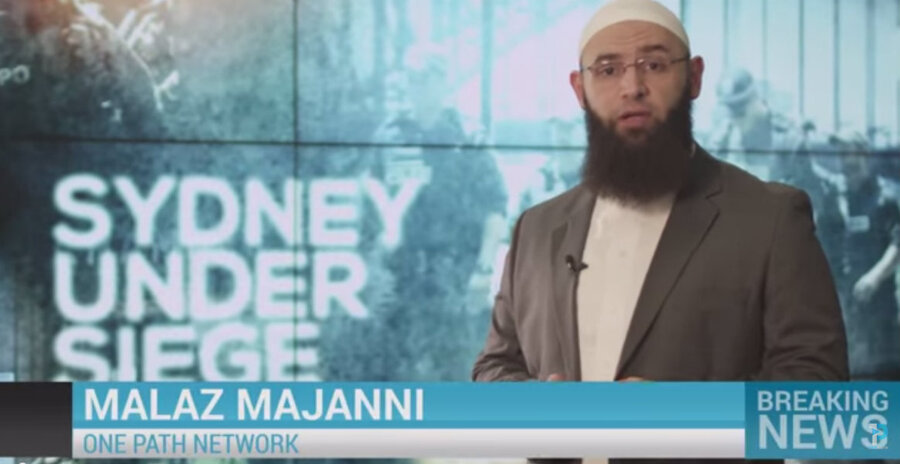Sydney Muslims countering mainstream media with new TV studio. Can it change minds?
Loading...
Muslims in Sydney, Australia, are taking news matters into their own hands.
The One Path Network, a $1 million television studio set up by members of Sydney’s Muslim community, features English-language programs that seek to counter mainstream media’s portrayal of Islam, Malaz Majanni, head of the network, told the Australian Broadcasting Corporation.
Airing on the network’s YouTube channel are programs that include interviews with local sheikhs on Islamic teachings, legal advice for Muslims, and responses to atrocities committed by groups such as the Islamic State, also known as ISIS.
“This is a time where there is a lot of pressure on the Muslim community," Mr. Majanni said. "Unfortunately, you do find that with the mainstream media, sometimes we are misrepresented, lost in translation... here, we are able to make sure that a clear message is sent out.”
There is a need to counter negative stereotypes of Islam around the world, and it’s vital that the Muslim community and the media work together to do it, says Ibrahim Hooper, communications director for the Washington, D.C.-based Council on American-Islamic Relations. This is especially true today as media coverage of the brutality of groups that tie themselves to Islam – such as ISIS in the Middle East and Boko Haram in Nigeria – have made it increasingly difficult to counter negative perspectives of Muslims and Islam worldwide, Mr. Hooper adds.
“No matter how many condemnations are issued [against these groups], no matter how many repudiations you make, they’re thrown in your face” as soon as the latest ISIS beheading or Boko Haram massacre hits the headlines, Hooper says.
Framing Islam
Studies have shown that global media coverage tends to skew towards linking terrorism, both domestic and international, to Islam since at least the Sept. 11 attacks. This is despite the fact that only a fraction of terrorist acts in the United States and the European Union in recent years were actually committed by religiously-motivated groups or individuals.
Of the 152 terrorist attacks carried out in EU member states in 2013, for instance, only two were linked to religious extremism, according to a Europol report. In the United States, Muslim-American terrorism has claimed 37 lives between the 9/11 attacks and 2013, out of 190,000 murders that during the same period, a North Carolina University report found.
And while religious extremism is a very real phenomenon that has resulted in brutal deaths, the media has shown a pattern of highlighting terrorism incidents linked to Muslims and making associations between terrorism and Islam, Kimberly Powell wrote in her 2011 report, published in the journal Communication Study.
In the US, terrorism reports tended to include associations with Al-Qaeda, even when the event being reported was domestic and isolated in nature, according to Ms. Powell, who analyzed media coverage of 11 terrorism events that occurred on US soil between 9/11 and 2010.
The result, she wrote, is a setup that places Christian America on one side and Islam on the other.
“Though not stated so explicitly in news stories, the theme inevitably develops when Muslim and Christian are juxtaposed in killer and killed,” Powell wrote. “Emphasizing religious differences intensifies East and West differences, and fear of Muslim Americans, who are linked to terrorism in news media by having the same religion as the terrorists.”
Counteracting negativity
Such challenges in perspectives and stereotypes are not easy to overcome, Hooper says, especially not with extremist groups abroad making it their mission to commit headline-making atrocities.
But there are ways to counteract the negativity, if the media and the Muslim community start working together.
“The vast majority of the media are out to do their best with the resources available,” says Hooper, who works with media representatives on a daily basis.
In particular, individual journalists who have experience with Muslims and and Muslim culture can make a considerable impact in promoting tolerance and understanding in opposition to the “mainstreaming of anti-Muslim hate” that appear in letters to the editor and opinion columns, he adds.
Hooper also says that Muslims need to make their knowledge and expertise available to the media and the larger public, whether it’s by agreeing to be interviewed by reporters or pushing information about Islam on social media.
That’s what Sydney’s One Path Network is doing: “The approach was to make sure that there's no particular targeting against the Muslim community,” Majanni said.
Though Hooper notes it’s not easy to come by $1 million to start a television studio, he notes that Radio Islam in Chicago, the Islamic Broadcasting Network, and others are engaged in broadening the public’s understanding of Muslim culture and Islam. The key, he says, is in being dedicated and consistent with the message.
“It’s part of newsmaking,” Hooper says. “Any time you have Muslims offering perspectives on the issues of the day, it helps.”






